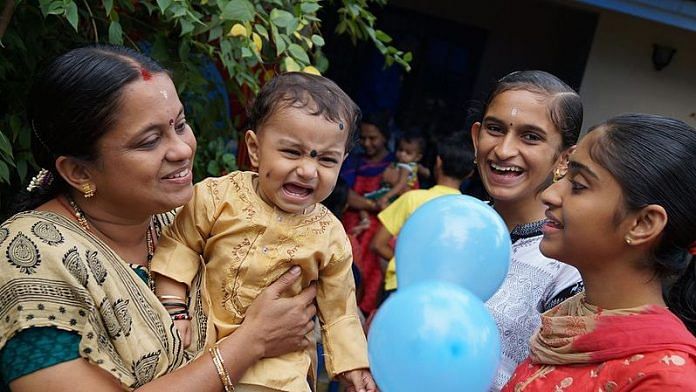New Delhi: In a major boost to Modi government’s efforts, more Indians are now choosing to have at least three years of birth interval between successive children.
The latest Sample Registration Survey results show that in the percentage distribution of second and higher order live births in 2017, 50.3 per cent were at an interval of at least 36 months between current and previous live birth.
Live births are defined as those in which the child is alive at the time of birth.
Under the National Health Mission, the Modi government has constantly urged people to have a minimum gap of three years between children.
The latest figure is a marked improvement from 2011 SRS results when the birth interval was pegged at 42.4. However, there is a slight cause for worry as the number seems to be plateauing — in 2016, it was at 51.9.
The percentage of births in the 10-12 months interval category for 2017 was 2 per cent, while that in the 12-24 and 24-36 months interval categories were 21.3 and 26.4, respectively.
The Sample Registration Survey, conducted by the Office of the Registrar General, is the largest demographic survey in the world covering about 7.9 million population. It seeks to provide reliable estimates of various fertility and mortality measures in India. The latest round was conducted last year.
Also read: India’s population growth slows substantially, may ‘no longer be pressing problem’
Rural-urban divide
In urban areas, the percentage of children born after at least 36 months of the previous birth was 58 per cent while of those born within 10-12 months was 1.6 per cent.
In rural areas, the percentage of children born after at least 36 months stands at 47.8 per cent.
Even as the disparity between rural and urban areas is clear, the trend in the former shows signs of improvement. The figure of 47.8 per cent is a sharp rise 40.2 per cent in 2011. In urban areas, the 2011 figure was 51.2 per cent.
Inter-state disparities
Among Indian states, the percentage figure in the 36+ months category was best for Kerala at 73.2. Other top performing states included West Bengal (69.3), Odisha (67.8) and Assam (65.1).
The states which lagged behind significantly included Andhra Pradesh (41.3), Rajasthan (41.6), Telangana and Bihar (both at 41.8).
In some states, curiously, the urban areas lagged rural ones — for instance, Andhra Pradesh, Punjab, Telangana and West Bengal.
For Andhra Pradesh, the rural and urban percentages were at 41.5 and 40.6, respectively. The corresponding figures were 55.3 per cent and 54.1 per cent for Punjab, 45.2 per cent and 38.4 per cent for Telangana, and 69.3 per cent and 69 per cent for West Bengal.
In Madhya Pradesh, the difference between rural (34.1) and urban numbers (59.6) was highest at 25.5. In Gujarat, too, the urban (70.3) and rural difference (52) stood disproportionately at 18.3.
Also read: Indian women are seeing motherhood as a task, not a goal & that could lower our population



